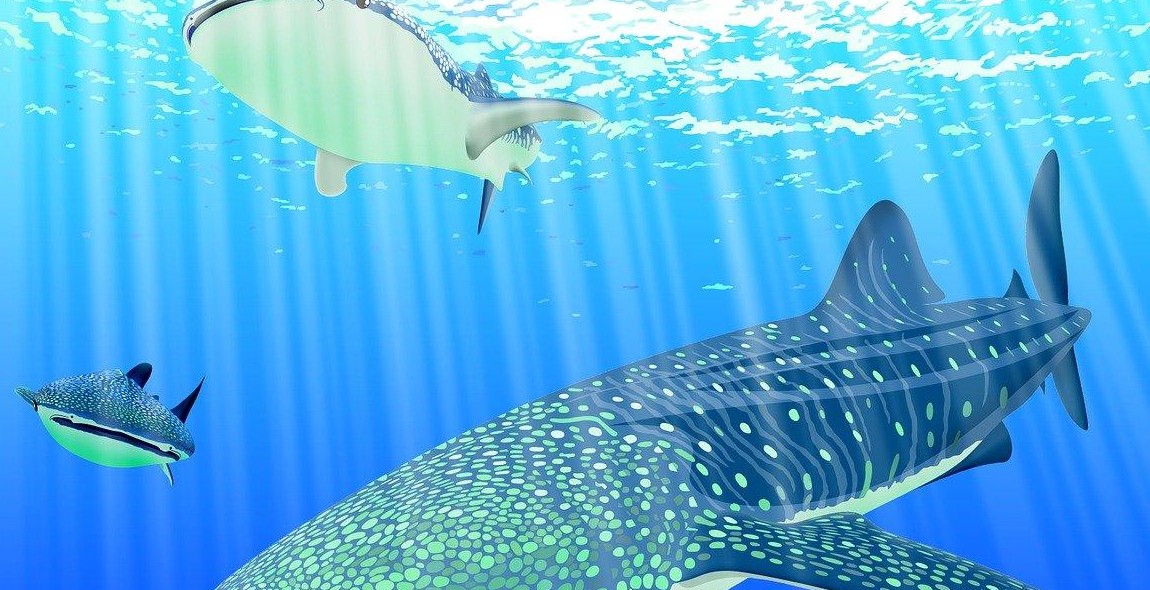How to Swim with Whale Sharks: Guidelines for an Unforgettable and Respectful Encounter
Swimming with whale sharks is a once-in-a-lifetime experience that allows you to get up close and personal with these magnificent creatures. However, it’s important to remember that whale sharks are wild animals and should be treated with respect. In this article, I will share my personal experience and provide you with guidelines to ensure you have an unforgettable and respectful encounter with these gentle giants.
What are Whale Sharks?
Whale sharks are the largest fish in the world, with an average length of 40 feet and weighing up to 20 tons. Despite their name, they are not whales but are actually a species of shark. These gentle giants are filter feeders, meaning they feed on plankton and small fish by swimming with their mouths open.
Where to Swim with Whale Sharks?
Whale sharks can be found in warm waters around the world, including the Philippines, Mexico, Australia, and the Maldives. However, it’s important to choose a reputable and sustainable tour operator that follows guidelines to ensure the safety of the whale sharks and their habitat.
Guidelines for Swimming with Whale Sharks
- Do not touch the whale sharks
- Keep a safe distance of at least 6 feet
- Do not use flash photography
- Do not wear sunscreen or any other chemicals that may harm the whale sharks
- Follow the instructions of your tour guide
By following these guidelines, you can have a safe and respectful encounter with whale sharks while also protecting their natural habitat. So, come and experience the wonder of swimming with whale sharks, but remember to do so with respect and responsibility.

What are Whale Sharks?
Whale sharks (Rhincodon typus) are the largest fish in the world, growing up to 40 feet in length and weighing up to 20 tons. Despite their name, they are not whales, but rather a species of shark. They are found in warm waters around the world, including in the Atlantic, Indian, and Pacific Oceans.
Whale sharks have a distinctive appearance, with a flattened head and a wide mouth that can open up to five feet wide. They have five large gill slits on the sides of their head and a series of white spots and stripes on their dark gray or brown skin. These spots are unique to each individual and can be used to identify specific whale sharks.
Behavior
Whale sharks are filter feeders, meaning they feed on plankton and small fish by swimming with their mouths open and filtering out food through their gills. They are known to migrate long distances and can be found in groups or alone.
Conservation Status
Despite their massive size, whale sharks are considered vulnerable by the International Union for Conservation of Nature (IUCN) due to their slow reproductive rate and susceptibility to fishing and boat strikes. They are protected in many countries, including the Philippines, Mexico, and Australia.
| Scientific Name | Rhincodon typus |
|---|---|
| Length | Up to 40 feet |
| Weight | Up to 20 tons |
| Diet | Plankton and small fish |
Why Swim with Whale Sharks?
Swimming with whale sharks is a once-in-a-lifetime experience that every nature enthusiast should have. These gentle giants are the largest fish in the ocean and can grow up to 40 feet long. They are filter feeders, which means they feed on plankton and small fish, making them completely harmless to humans.
Swimming with whale sharks not only provides a thrilling adventure, but it also promotes eco-tourism and conservation efforts. By experiencing these magnificent creatures up close, people can gain a deeper appreciation for their importance in the marine ecosystem and the need to protect them from harm.
Another reason to swim with whale sharks is the opportunity to witness their unique behavior. Whale sharks are known for their slow and graceful movements, and their distinctive pattern of white spots and lines on their skin. They also have a fascinating feeding behavior where they open their massive mouths and filter water through their gills to capture plankton.
Finally, swimming with whale sharks provides a chance to create unforgettable memories. The feeling of being in the water with these gentle giants is awe-inspiring and humbling. It is an experience that will stay with you for a lifetime.
If you are looking for an adventure that combines excitement, education, and conservation, swimming with whale sharks is the perfect activity for you.
Where to Swim with Whale Sharks?
Swimming with whale sharks is an unforgettable experience that requires careful planning and consideration of the location. Here are three top destinations for swimming with whale sharks:
Cancun, Mexico
Cancun is a popular tourist destination that offers a unique opportunity to swim with whale sharks from May to September. The crystal-clear waters of the Caribbean Sea provide a perfect backdrop for the encounter with these gentle giants. The Mexican government has implemented strict regulations to protect the whale sharks, so it’s important to choose a reputable tour operator that follows the guidelines.
Donsol, Philippines
The Philippines is home to one of the largest populations of whale sharks in the world, and Donsol is the best place to see them. The whale sharks can be spotted from November to June, and the local community has developed a sustainable tourism model that benefits both the visitors and the marine life. The tours are limited to small groups, and the guides are trained to ensure a respectful and safe interaction with the whale sharks.
Exmouth, Australia
Exmouth is a remote town on the western coast of Australia that offers a unique opportunity to swim with whale sharks from March to August. The Ningaloo Reef is a UNESCO World Heritage Site that attracts a diverse range of marine life, including whale sharks. The tours are led by experienced guides who provide informative commentary and ensure a safe and enjoyable experience for all participants.
| Location | Season | Tour Operators | Regulations |
|---|---|---|---|
| Cancun, Mexico | May-September | Multiple | Strict |
| Donsol, Philippines | November-June | Community-based | Sustainable |
| Exmouth, Australia | March-August | Experienced | Safe |
How to Swim with Whale Sharks?
Swimming with whale sharks is an incredible experience that everyone should try at least once in their lifetime. However, it is important to do it in a responsible and respectful manner. Here are some guidelines to follow:
Choose a Responsible Tour Operator
When choosing a tour operator, make sure they have a good reputation for responsible and sustainable tourism practices. Look for reviews and ask for recommendations from people who have already swum with whale sharks. A responsible tour operator will prioritize the safety and well-being of the whale sharks and their habitat.
Listen to the Briefing
Before getting in the water, the tour operator will give a briefing on how to swim with the whale sharks. Pay attention and follow their instructions carefully. They will explain the dos and don’ts, as well as the rules and regulations that must be observed.
Observe the Rules
There are rules and regulations in place to protect the whale sharks and their habitat. These include maintaining a safe distance, not touching or riding the whale sharks, and not using flash photography. Follow these rules to ensure a safe and respectful encounter.
Respect the Whale Sharks
Remember that you are a guest in their habitat. Respect the whale sharks by not disturbing or harassing them. Do not chase after them or try to get too close. Instead, observe them from a safe distance and enjoy the experience.
By following these guidelines, you can have an unforgettable and respectful encounter with these gentle giants of the ocean.
What to Expect During a Whale Shark Encounter?
Swimming with whale sharks is a thrilling and unforgettable experience, but it’s important to know what to expect before diving in. Here are some guidelines to help you prepare for your encounter:
1. Safety First
Your safety is paramount during any wildlife encounter. Always listen carefully to your guide’s instructions and follow their lead. Never touch or ride on a whale shark, as this can harm the animal and put you in danger.
2. Get Your Gear Ready
You’ll need a snorkel, mask, and fins to swim with whale sharks. It’s also a good idea to wear a wetsuit for protection from the sun and jellyfish. If you’re prone to seasickness, take medication before the trip.
3. Look but Don’t Touch
Whale sharks are gentle giants, but they are still wild animals. Keep a safe distance from the animal, and avoid touching or chasing it. Remember, you’re a guest in their home, so treat them with respect.
4. Be Patient
Whale sharks move slowly and may not be visible at the surface for long periods. Be patient and wait for the animal to approach you. Avoid splashing or making sudden movements, as this can scare the shark away.
5. Enjoy the Experience
Swimming with whale sharks is a rare and incredible opportunity. Take the time to appreciate the beauty of these magnificent creatures and the wonder of the natural world.
By following these guidelines, you can have a safe and respectful encounter with whale sharks that you’ll remember for a lifetime.

Conclusion
Swimming with whale sharks is an unforgettable experience that can leave you awestruck. However, it is important to remember that these gentle giants are not to be taken for granted. To ensure a safe and respectful encounter, it is crucial to follow the guidelines outlined above.
Respect for the Environment
Whale sharks are an important part of the marine ecosystem and should be treated with respect. As visitors to their environment, it is our responsibility to minimize our impact and leave no trace behind.
Respect for the Whale Sharks
Whale sharks are wild animals and should be treated as such. It is important to maintain a safe distance and avoid touching or chasing them. By following these guidelines, we can ensure that these magnificent creatures continue to thrive in their natural habitat.
Respect for Local Regulations
Many destinations have specific regulations in place to protect whale sharks and their habitat. It is important to research and follow these regulations to ensure a safe and responsible encounter.
